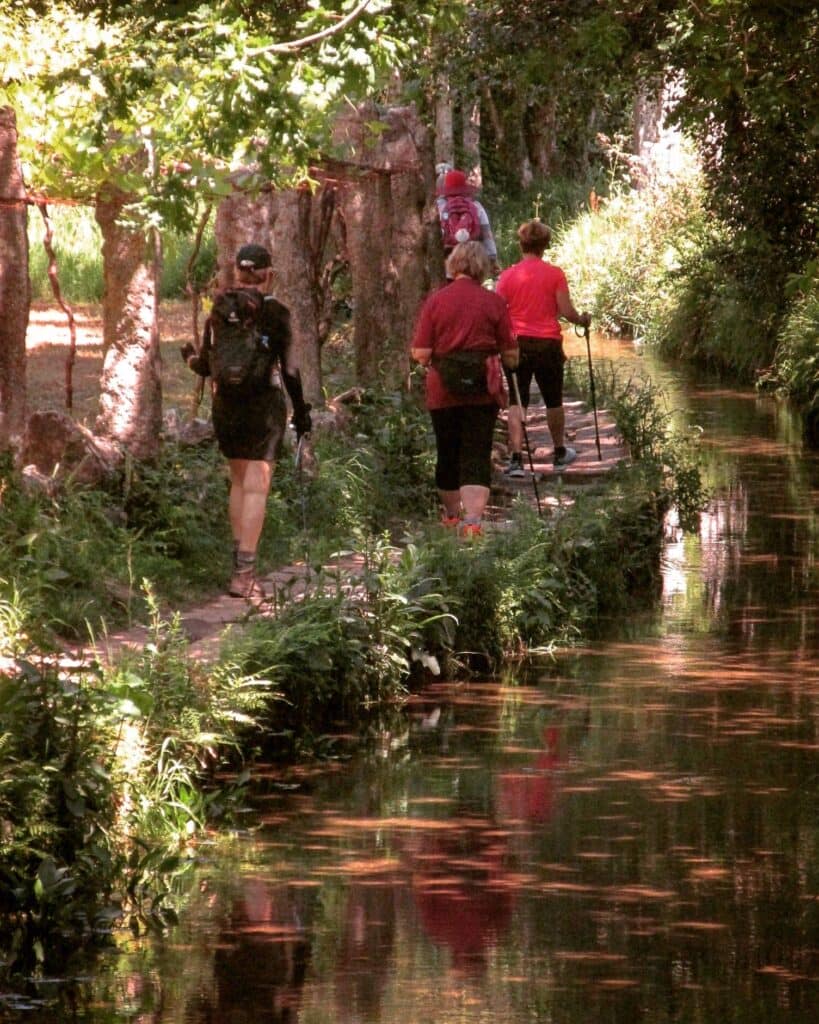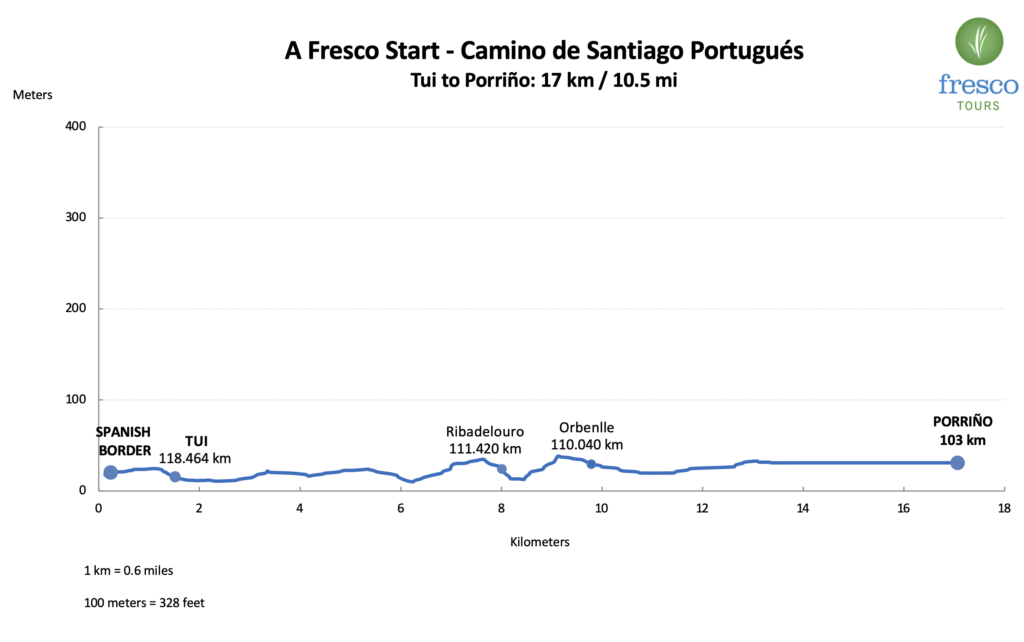Today’s stage takes you from Tui to O Porriño. Before you leave the town of Tui, you visit the historic quarter to see the fortress-like Gothic Cathedral of Santa María, with its stunning west door. The cathedral was started in the late 11th century and it was finished 150 years later. Thus, and in line with many other cathedrals, the style progressively moved from Romanesque to Gothic. Its fortress-like appearance may have been because at the time of its construction Tui was already an important and wealthy city that was frequently attacked by Saracen pirates from the southern Muslim kingdoms in present-day Portugal, Vikings from northern Europe, or even the Christian Kingdom of Portugal.

As you depart Tui, you come upon a small forest where you reach the picturesque San Telmo’s Bridge. The bridge is also called the Bridge of Fever by the locals, as this is where tradition believes that San Telmo fell ill on his way to Santiago with a high fever that would kill him shortly afterwards.
The first village you encounter after a refreshing walk through the woods is Ribadelouro (bank of the Louro). The Camino leaves town by a set of five cruceiros, or stone crosses, in a little park. These mark the spot where the Romanesque Church of Saint Mary Magdalene used to stand. Local tradition has it that Saint Mary Magdalene helped to protect people from malaria, which was endemic at one time in the region (this may have been what killed San Telmo).

The next town you pass through has changed significantly in the last century. Orbenlle has recently become engulfed by an industrial landscape. A new alternative route mapped by Camino associations takes us through the woods. Don’t worry, at your orientation meeting yesterday, this will have been explained and described in depth.

After a lovely walk through woods and rural villages, you arrive to your hotel. Congratulations, you have completed the Tui to O Porriño stage! The town is an important crossroads in Galicia. The town lays roughly in the place where the road from the busy port city of Vigo on the coast heading east towards Castile intersects with the major trade route between Santiago de Compostela and Portugal in the south.


















